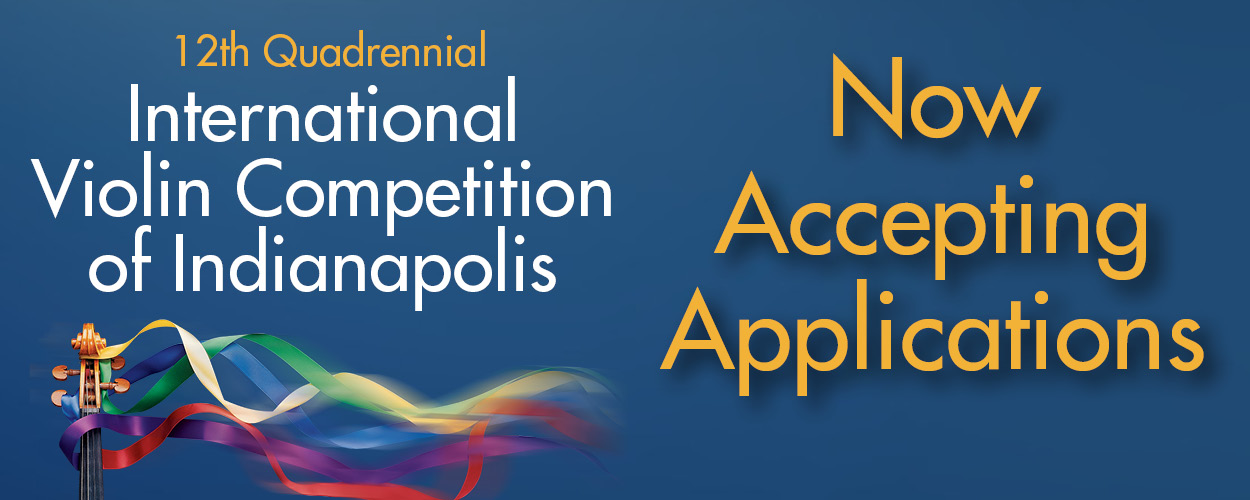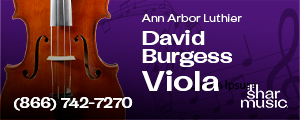The Argument for November 19
Some performances arrive not as spectacle, but as conclusion.
Not the end of a journey, but its fullest articulation.
On November 19, at Koerner Hall in Toronto, a recital by world-renowned violin virtuoso Ray Chen will take place.
It represents the concentrated endpoint of a process that began months ago in Melbourne and has been methodically refined across two continents.

The Architecture of Preparation
What distinguishes this evening is the density of accumulated thought embedded in every phrase.
Curated and refined by Ray Chen, the program—Tartini's Devil's Trill, Bach's Partita No. 2, Saint-Saëns, Paganini—has traveled through radically different acoustic environments, each demanding specific adaptations. Melbourne's stage provided the initial framework.
Sydney's Opera House, with its two-second reverberation and midrange emphasis, required recalibration of bow speed and contact point. American venues introduced new conceptual anchors: breath, pulse, and structural coherence.
By Toronto, Chen’s interpretation carries the accumulated weight of dozens of performances, hundreds of hours of visible practice, and feedback from 350,000 users who observed the work's evolution in real time through documented rehearsal sessions.
This is not improvisation. It is the opposite, interpretation refined to the point where spontaneity becomes possible precisely because every technical decision has been tested and optimized.

The Methodology Made Audible
Consider what it means to attend a performance where the interpretive choices have been developed through a systematic process that includes:
Preparation guided by research: Before touching the instrument, Chen analyzed multiple recordings at reduced playback speeds to identify strategic decisions by other artists. Not to copy, but to understand the range of viable solutions to technical problems.
Structural mapping: Division of complex works into sections assessed for risk, with practice time allocated proportionally to difficulty rather than distributed evenly.
High-risk passages in the Devil's Trill and Bach's Chaconne received disproportionate attention until they achieved the same security as simpler sections.
Technical optimization: Testing multiple fingering patterns for challenging passages, comparing them for stability, speed, and tonal quality, then committing to the most efficient option.
Strategic refinement: Recognition that not all notes carry equal weight. In rapid passages where certain voices become inaudible at tempo, those notes can be simplified without compromising the musical architecture.
The practice sessions documenting this process have been listened by hundreds.
When audience members attend the Toronto performance, they won't simply hear the result.
They'll recognize the specific solutions to problems they listened to Chen solve. Listening transforms from passive consumption into informed recognition.

The Acoustic Argument
Koerner Hall presents specific challenges that make it ideal for work prepared with this level of detail. Its acoustic doesn't forgive approximation. Slight intonation errors that might vanish in a more reverberant space become exposed here. Bow pressure inconsistencies that could hide elsewhere become audible.
But for music that has been subjected to the degree of scrutiny evident in Chen’s preparation, where fingerings have been tested, bowings optimized, and potential risk points identified and addressed, this transparency becomes an asset rather than a threat.
The hall reveals exactly what has been prepared. And what has been prepared is comprehensive.
The venue rewards precision but amplifies warmth. For an interpretation built on the balance between technical exactitude and emotional depth, this combination is optimal.
The "dance of fire," rapid articulation that leaves sparks in its wake, will register with crystalline clarity.
The "cycle of water," long legato lines that gather and release the hall's natural sustain, will expand into the space without losing definition.
The Intellectual Framework
Beneath the surface mechanics lies a philosophical stance about what music can accomplish.
Tartini's trill isn't decorative; it is structural, sustaining harmonic tension through repetition. Bach's Chaconne doesn't simply present variations; it models transformation, each return altered by what preceded it, like water that has traveled and carries new sediment.
Saint-Saëns doesn't merely contrast lyricism with virtuosity; he interrogates the relationship between control and release. Paganini's 24th Caprice doesn't showcase technique; it systematically explores how many different musical characters can be extracted from a single melodic idea.
These aren't metaphors. They're analytical conclusions drawn from study of the scores, research into historical context, and comparison of how different performers have approached the same material.
Chen’s performance makes these insights audible.
The Transparency Principle
This is a performance that doesn't pretend to mysterious inspiration.
The Romantic myth of the tortured genius channeling ineffable forces has been deliberately dismantled and replaced with something more honest: mastery as a visible, replicable process.
Chen’s practice sessions reveal metacognition in action.
Identification of risk zones, marking of checkpoints, surfacing of past errors, and modeling of corrections. This isn't "natural talent." It is systematic problem-solving applied to extreme difficulty.
The stage becomes an extension of the practice room, but elevated by the presence of listeners who understand the architecture of what they're hearing.
Technique serves expression, but it serves transparently.
The scaffolding isn't hidden. It is part of the design.
The Question of Legacy
When interpretation is shaped through iterative refinement and community input, the result carries a different relationship to tradition.
This isn't one person's vision imposed on historical material.
It is a synthesis—Chen as alchemist, transmuting collective suggestions into singular expression.
The practice methodology has been integrated into serious pedagogy. The Royal Conservatory of Music in Toronto adopted the TONIC platform for practical exams in June 2025, validating the approach as more than a personal process; it is a transmissible technique.
Students now track practice with the same tools and analytical frameworks Chen used in preparing this recital.
This creates a feedback loop: the recital demonstrates principles that students then apply, generating data that refines the methodology, which informs future performances.
Excellence becomes not a static achievement but an evolving system.

The Accumulated Evidence
What the November 19 performance represents:
• Months of acoustic adaptation across venues ranging from Melbourne's direct acoustic to Sydney's long decay to American halls with varied characteristics
• Problem-solving documented through hundreds of hours of practice sessions where technical challenges were identified, analyzed, and resolved
• Community validation from 350,000 platform users who observed the preparation process and contributed to refinement
• Pedagogical verification through institutional adoption of the underlying methodology
• Interpretive maturity built on previous performances of the same repertoire, allowing comparison between earlier and current approaches
This isn't hype.
It is accumulated evidence suggesting that what will occur on November 19 represents a particular kind of achievement: preparation so thorough that it enables presence, structure so solid that it permits spontaneity, technique so refined that it becomes transparent.
Why Koerner, Why Now
Toronto sits at a specific intersection.
The city has already validated the methodology through institutional adoption. The hall provides acoustic conditions that reward the level of preparation evident in the documented process.
The audience includes both those familiar with the repertoire and those encountering it freshly, allowing the performance to work on multiple levels simultaneously.
And the timing places this recital at a point of maximum refinement. Not the beginning of exploration (that was Melbourne) and not experimental investigation (that was the American tour), but full articulation.
The point where all accumulated understanding crystallizes into a single evening.

The Core Proposition
Attend this performance if you want to hear what happens when:
• Interpretation evolves through systematic refinement rather than relying on spontaneous inspiration
• Technical challenges are solved through research and testing rather than repetitive drilling
• Emotional depth emerges from structural understanding rather than opposing it
• Community input shapes without diluting individual artistic vision
• Preparation becomes so complete that performance can focus entirely on communication
Or attend if you simply want to hear Tartini, Bach, Saint-Saëns, and Paganini played with unusual clarity in a hall designed to reveal exactly that quality.

Either way, November 19 at 7 PM. Koerner Hall.
This is the performance that results when excellence stops being a mystery and becomes a method, but loses none of its capacity to move.
The tickets aren't admission to a concert.
They have access to a culmination.
One shaped and delivered by Ray Chen.
And culminations, by definition, happen exactly once.
Violinist.com is made possible by...
International Violin Competition of Indianapolis
Violinist.com Holiday Gift Guide
Dimitri Musafia, Master Maker of Violin and Viola Cases
Johnson String Instrument/Carriage House Violins
Subscribe
Laurie's Books
Discover the best of Violinist.com in these collections of editor Laurie Niles' exclusive interviews.

Violinist.com Interviews Volume 1, with introduction by Hilary Hahn

Violinist.com Interviews Volume 2, with introduction by Rachel Barton Pine







